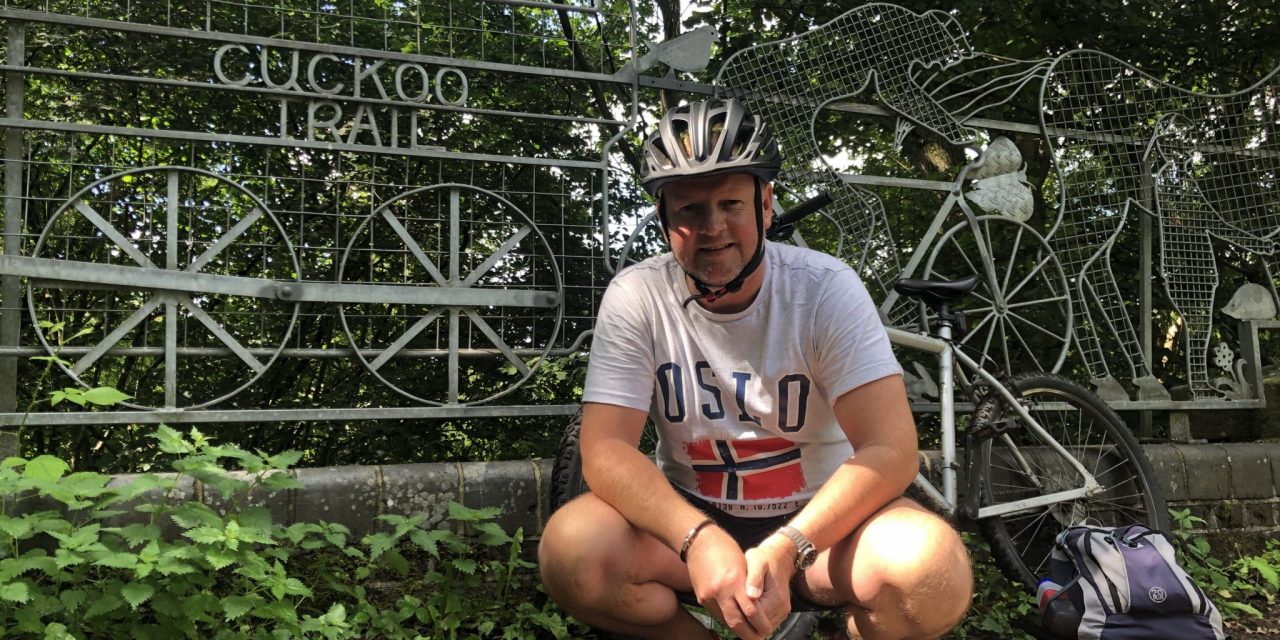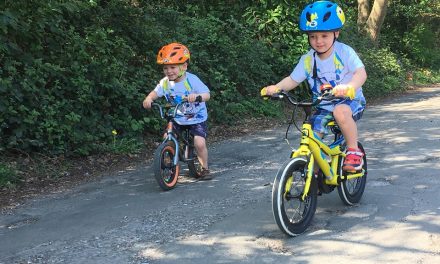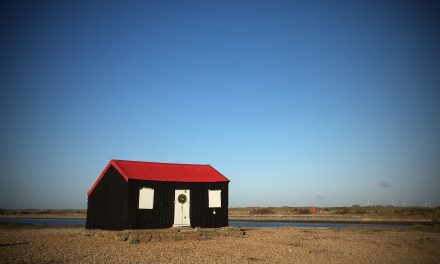If, like me, you’re a fair weather cyclist not keen on competing with fast moving traffic, gritting your teeth in the face of a force eight gale, or exhaustively persevering your way up a perilous mountainside, the Cuckoo Trail on a fine day is the perfect choice.
Away from roads, without significant inclines or altitude changes, and engulfed by a rich tapestry of flora and fauna, the peaceful serenity of this 11-mile route through part of East Sussex is marvellous for walkers, cyclists, runners, and horse riders alike.
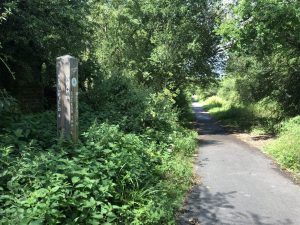
But it has not always been this way. The now family-friendly idyllic route between Heathfield and Polegate, was once part of the Cuckoo train line and from 1880 it was steam trains carrying passengers and freight that rattled their way down this path. The Cuckoo Trail, now being used by around 200,000 people per year, got its name from the tradition that the first cuckoo in Spring was heard at the Heathfield Fair.
A new life
Lost to the railway as part of the Beeching cuts in 1968, the Cuckoo Trail was slowly reclaimed by nature. In 1981 the route of the old railway line to the south of Heathfield was purchased by Wealden District Council and East Sussex County Council.
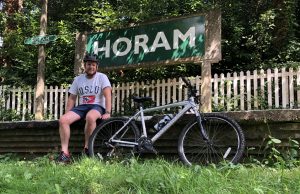
Trains have not stopped at this platform for more than 50 years.
From 1990, in partnership with the councils, Sustrans developed the route into a shared track for walkers and cyclists, with horses also allowed on some sections. An extension was constructed to the south into Eastbourne and the trail became part of National Cycle Network Route 21.
If you’re planning a family walk or bike ride along the trail you have a choice of starting points. There is parking either very close or adjacent to the trail at Heathfield and Polegate (the start and finish of the road free section) and also at Horam, Hellingly and Hailsham which are stops along the route.
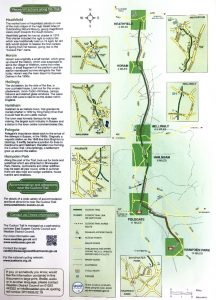
I have cycled the route many times and have always started at Heathfield but if you choose to follow in my tracks, be aware this means a downhill section to start and, more importantly, an uphill section to finish if you do a round trip. It’s far from being a Tour de France mountain stage type of incline, of course, but it’s worth bearing in mind.
Share with care
For families there are a few minor roads to be aware of that the route crosses. So it is worth making sure small children do not cycle off on their own unsupervised. These are well signed and have safety barriers, but care is needed nonetheless. It’s also worth remembering that the route is used by horse riders, dog walkers and pedestrians. A “Share with care” code of conduct provides guidance for trail users but basic politeness, courtesy and care means everyone can enjoy this rich environment.
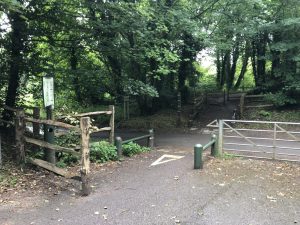
Signage and barriers warn trail users when it crosses a lane.
Most will bring their own cycles, of course, but bikes can now be hired using a mobile phone app, from the old station platform at Horam.
At different times of year there are different pleasures on this route. In the autumn the reds, golds and yellows of the falling leaves provide a magical backdrop, and frost in winter provides a crisp beauty to the fields and hedgerows. In the summer, an abundance of flowers, insects and birds with the songs of chiff chaffs, blue tits and blackbirds fill the space.
An abundance of wildlife
On my most recent visit, despite changeable weather, I saw a greater spotted woodpecker, heard the distinctive sound of a green woodpecker, watched as a buzzard stalked some prey above a field, encountered butterflies and dragonflies, and shared the space with thrushes, goldfinches and a range of other birds. And at the very end of my ride, distant and very quiet, I could just make out the call of a cuckoo.
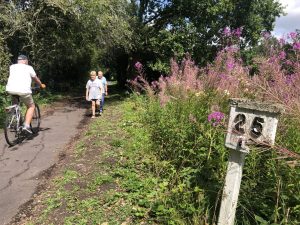
A great place for walkers, cyclists, and horse riders.
But, for me, it’s in spring that the Cuckoo Trail shows its best. The spring flowers are a complete delight and everywhere you look wood anemones carpet the floor. And on certain sections in May the bluebells provide a spectacular mass of colour through the trees.
The whole 11-mile route is an easy cycle and is almost all off-road (apart from two very small sections through housing estates) so while it’s important to concentrate on the task in hand, nonetheless there’s also ample opportunity to absorb yourself in the countryside sights and sounds around you.
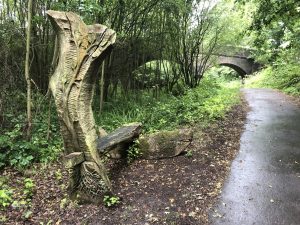
Keep an eye open for artwork along the trail.
Six original sculptures act as mileposts along the trail and, in May 1993, a dozen wooden benches were installed which had been hand-carved by a local artist out of trees felled during the Great Storm of 1987. Some of these still exist. In 2003 a five-year £65,000 package of grants for improvements to the Cuckoo Trail was awarded as part of the Woodland Grant Scheme. Part of these funds went towards the resurfacing of the Trail as far as Heathfield in October 2006.
Art and history
All along the route are plenty of picnic tables and benches offering opportunities for a rest, a quick snack, or a picnic, but also make sure you keep an eye open for some of the historical remnants of the line’s former life. Occasional rail line markers are still obvious, and in places like Horam and Hellingly, sections of the old railway stations and platforms can still be spotted.
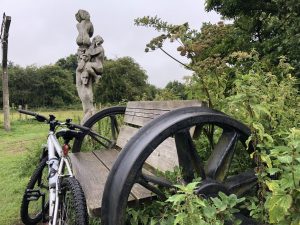
Plenty of places to take a rest.
The Cuckoo Trail is a perfect place for some free, quality family time, where young and old alike can enjoy being close to nature. In an increasingly busy and fast-paced world, it’s a perfect place for pressing the reset button and reconnecting with loved ones and the environment in which we live. And if you’re anything like me, slowing down to appreciate the detail of life around you, fresh air and exercise, will be good for your body and mind too.
Over the years I have walked and cycled the Cuckoo Trail dozens of times, occasionally adding on the extension into Eastbourne. But that does not mean it has become dull and familiar. Every visit brings something new to enjoy and marvel at. Every ride or stroll is a reminder of the beauty of nature and how lucky we are to be living in East Sussex.
For more information on the Cuckoo Trail, including the route, its history, wildlife to look out for, how to get to it, and the towns on the route, visit the Cuckoo Trail page on the East Sussex County Council website where you’ll find more details and a downloadable leaflet.
